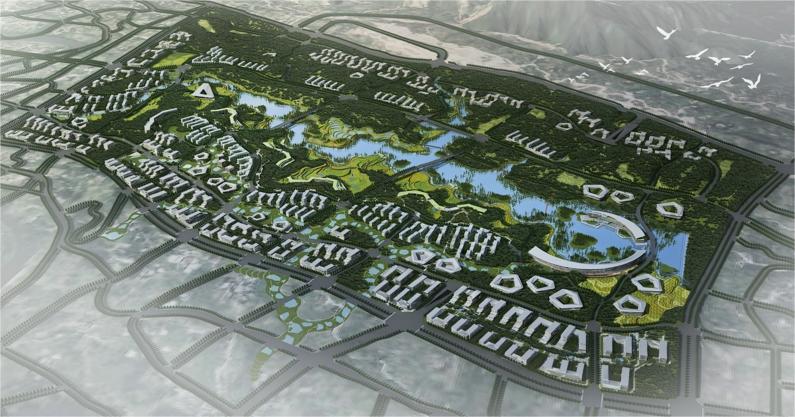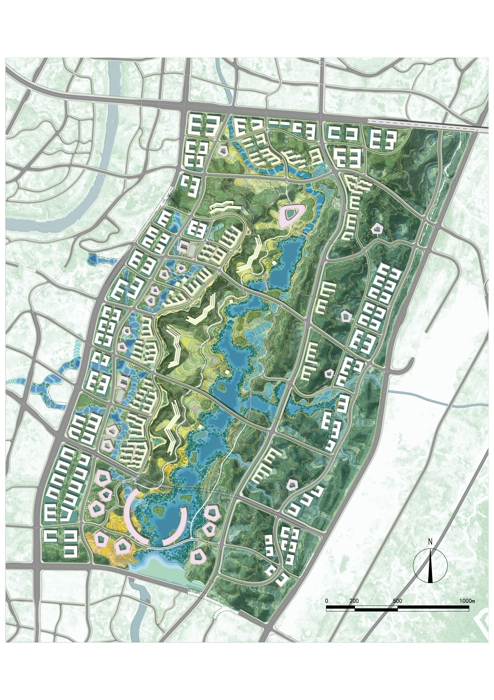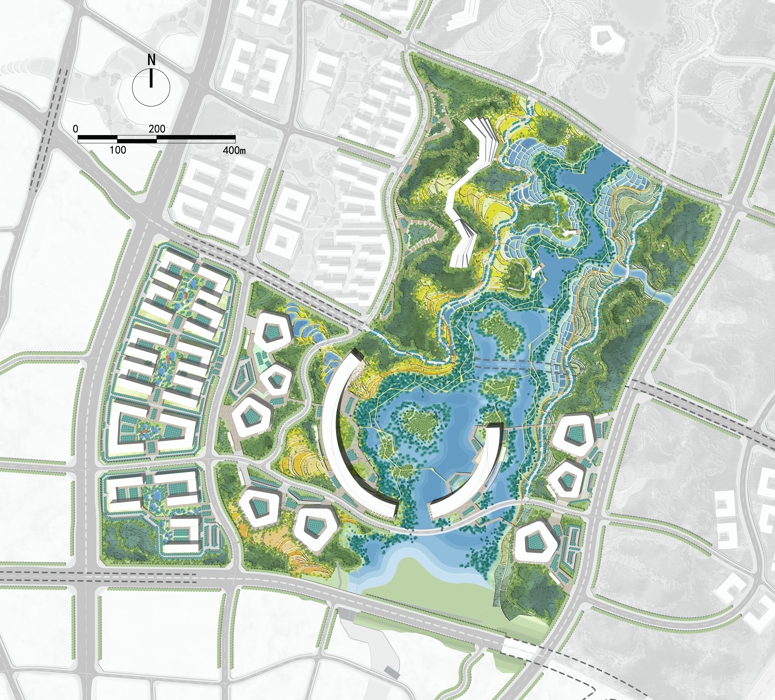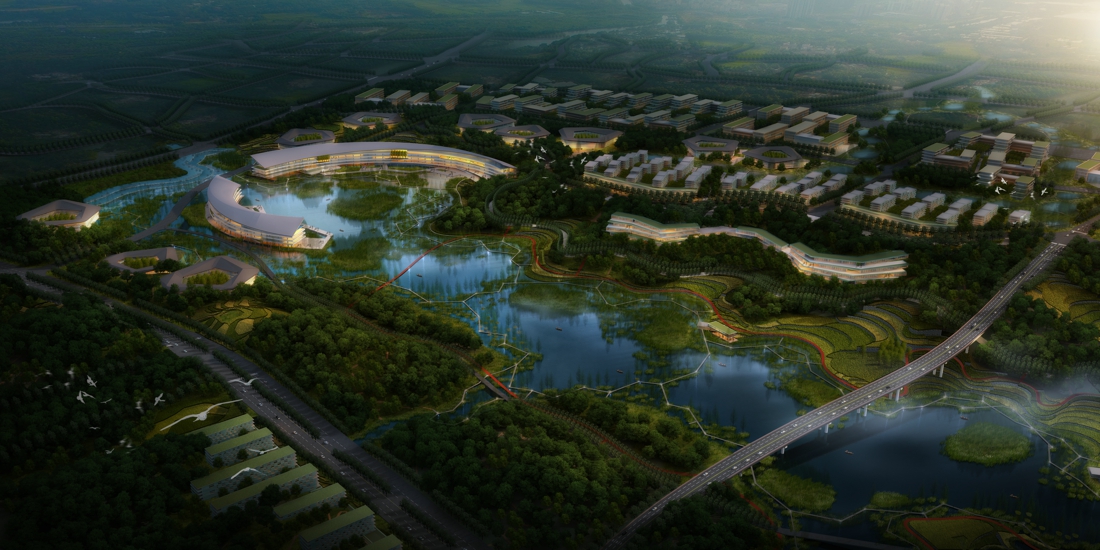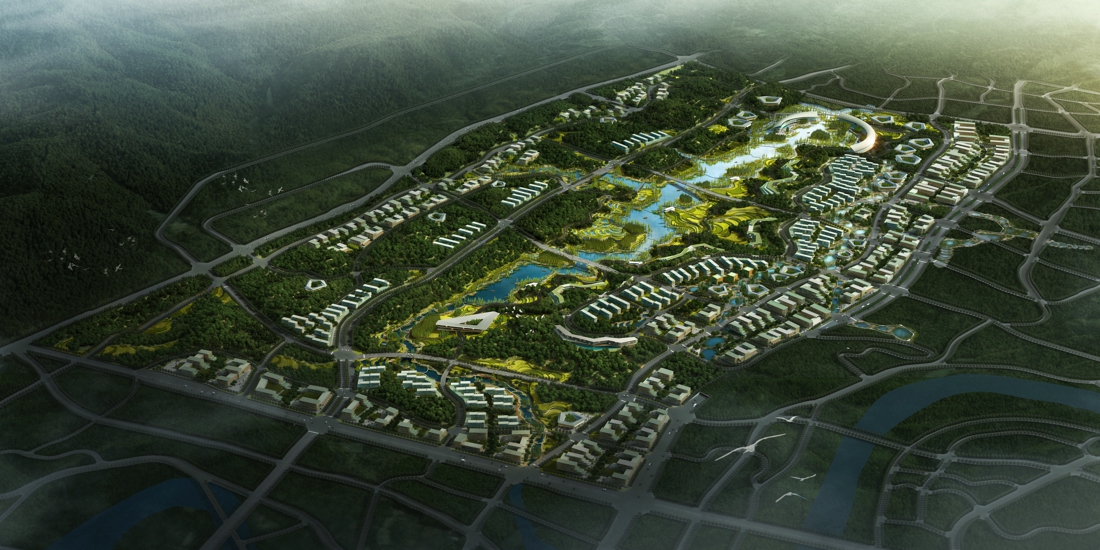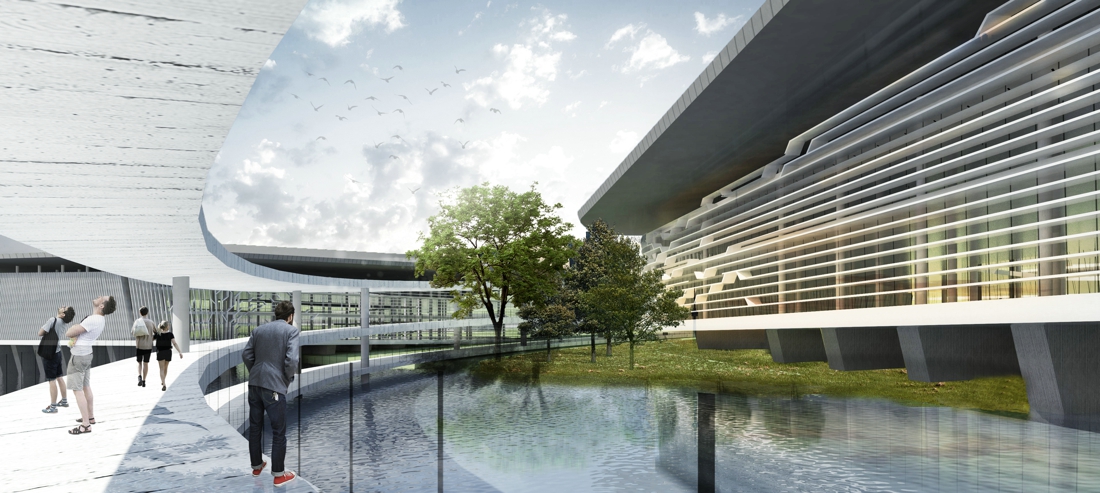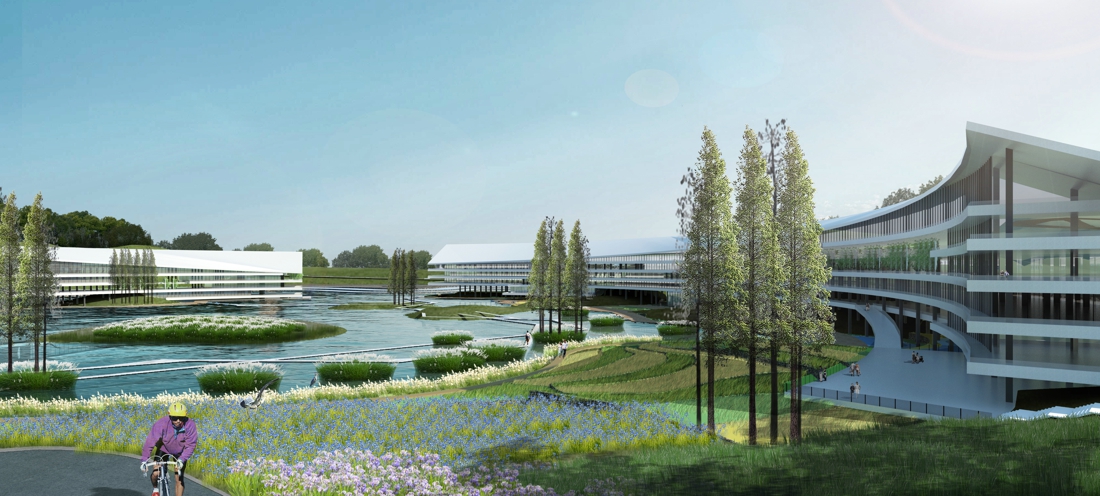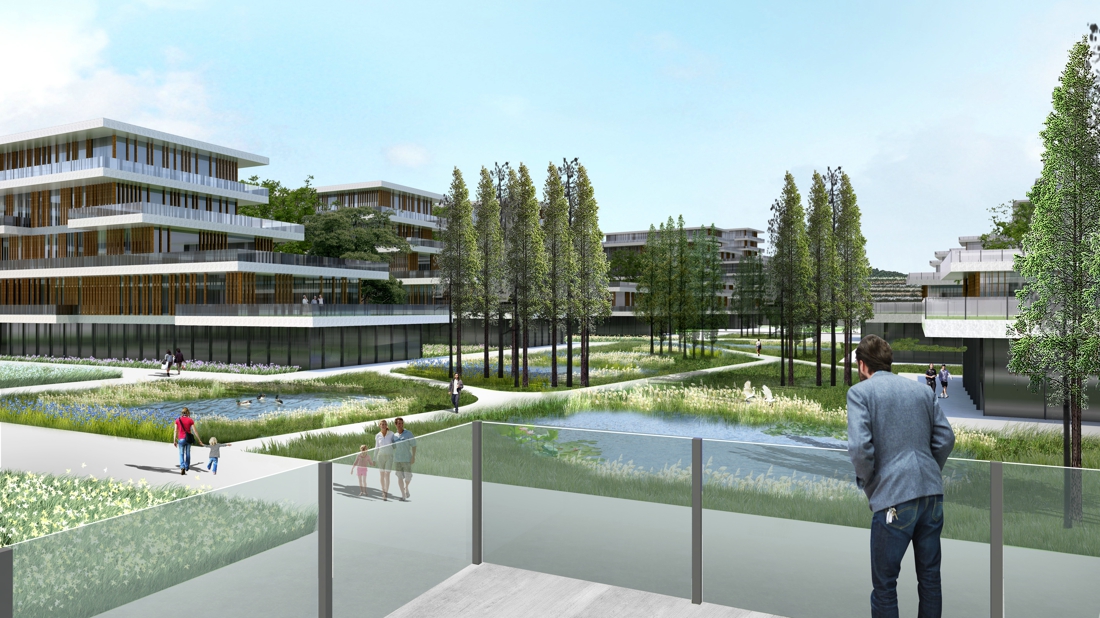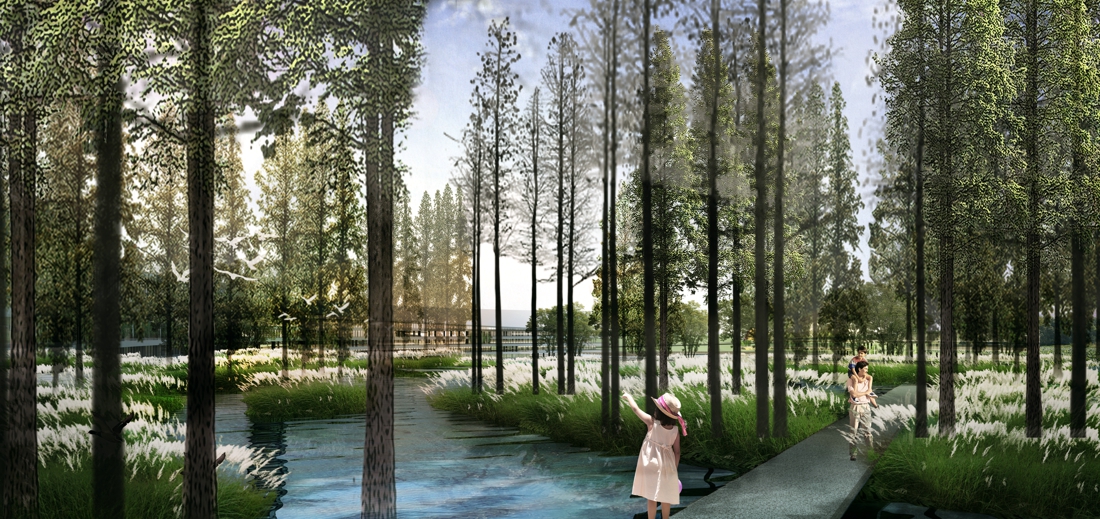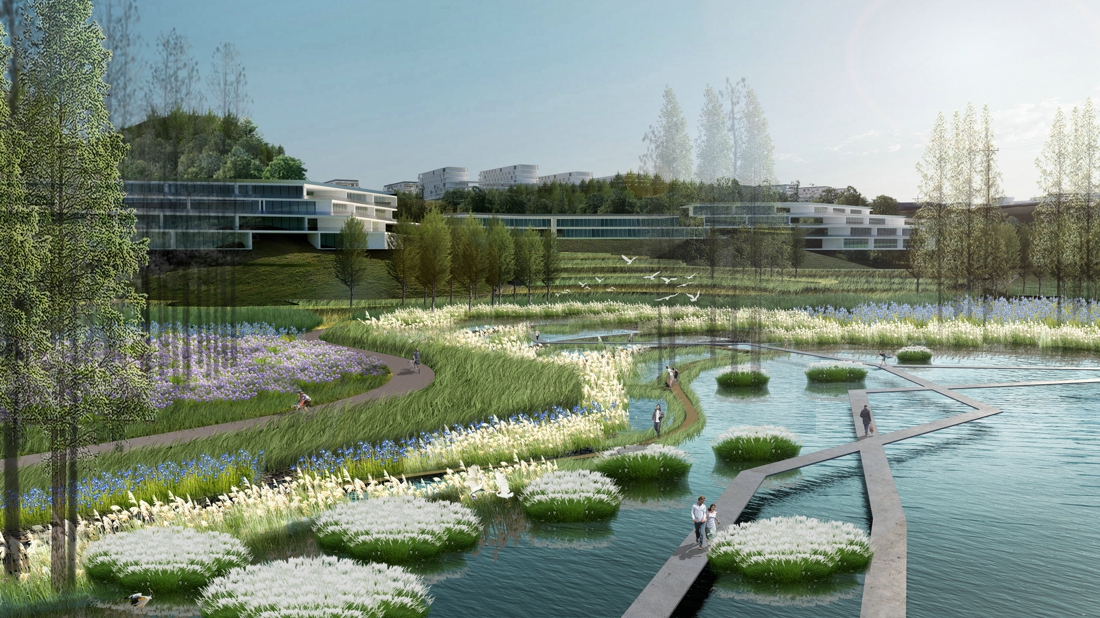Chongqing Liangjiang Collaborative Innovation Zone Conceptual Planning
Project Information
- Project Location:
- China Chongqing
- Project Scale:
- 6.8 Square Kilometers
- Design Time:
- 2018
- Client:
- Administrative Committee of Chongqing Liangjiang New Area
Project Profile
1. Project Statement
Chongqing Liangjiang Collaborative Innovation Zone is located in the northeast of Chongqing Liangjiang New Area. It is an important space carrier for the construction of the innovation center in the upper reaches of the Yangtze River in Liangjiang New Area. It is planned and constructed as the Chongqing Innovation Resource Gathering Highlands, the Science and Technology Innovation Demonstration Highlands, the New Industrial Incubation Highlands, and the International Science and Technology Exchange and Cooperation Highlands.
The total area of the project concept planning is 6.8 square kilometers, and the detailed urban design area of the start-up area is 1 square kilometer. The task is to deeply study the model of collaborative and innovative industrial construction, establish a spatial bearing platform for the gathering of innovative resources, and explore innovative space organization patterns for the integration of production, city, and landscape.
2. Objective and Challenge
1) The site belongs to the eastern Basin of Sichuan area.It is an independent Valley area in the eastern part of the Liangjiang New Area, which belongs to the Yulin river basin. It has fewer natural water bodies that mainly based on fish ponds and scattered throughout the venue; The main natural elements are peaks, cliffs, terraces, hills, valleys, and creeks. We should fully integrate, optimize and utilize existing resources.
2) The venue is in the subtropical monsoon climate zone, the climate is humid and rainy. The rainy season is April to September, whose rainfall accounts for 77 % of the annual rainfall, easy to form a concentrated continuous heavy rain. The north wind and the Northwest wind dominate the wind direction throughout the year, but the wind speed is low. As for the Southeast wind, the wind frequency is low and the wind speed is high, which has obvious effect on ventilation and heat dissipation in summer . The design of the building should ensure daylight and ventilation.
3) The current vegetation resources of the site are mainly farmland, bamboo forests, mulberry forests, evergreen broad-leaved forests, and weeds, which is relatively single. It is necessary to replant and plan the existing vegetation and build a rich community in the future.
4) The planning traffic around the site is relatively convenient. The future planning of the internal roads should achieve internal outreach, seamless connection, efficient and convenient, and modern intelligence.
3. Design Strategy
The Liangjiang Collaborative Innovation Zone is the core area of innovation demonstration in the upper reaches of the Yangtze River. It will become Chongqing's first landscape idyllic science and technology Highland and high-quality innovative resource gathering area of Liangjiang New Area. The plan is based on the landscape pattern and focuses on the eight industries. It adheres to the concept of ecological integration and wisdom sharing, which aims to create a pastoral Valley with a landscape and a green net interwoven with Chongqing's cultural characteristics.
1) Ecological pattern of landscape melting city
On the basis of the study on ecological security patterns, we extract the Two mountains and two valleys of the North-South direction as the key ecological structures. Around Juxian Lake and the Zhihui lake, we esrablish an ecological green network connecting the Mingyueshan matrix and the imperial river corridor to integrate into the regional sponge system. We will build a Three functional fused ecological infrastructure and open space system.
2) Open and shared public service system
With the walking scale, slow line docking, combination of green space, mixed functions, open and shared as the Layout and development principles, and Integration with the open space system of the center of the two lakes and the valley, an overall service pattern of "one mind, six gardens, two belts and four corridors" is formed. It meet the diverse needs of people with different cultural backgrounds on innovative industries and life, and promote the formation of shared culture in the new district.
3) A dynamic and diverse space for innovation
Taking the 10-minute walking circle as the scale unit, eight innovative groups of combined land use, mixed function, and balanced occupation were established to meet the development needs of elastic growth.
4) A convenient and efficient transportation system
We will advocate the preferred mode of transportation for public transport, and build three types of special buses: "Urban Rail + Park Smart Rail + Demand Responsive Bus", which will seamlessly connect with non-motorized transportation and combine with open space and shared services. At the same time, it plans to provide convenient access, urban balconies, vertical transportation, hiking trails, field trails, waterfront runways, and seven slow-moving systems on the waterfront trestle to cover the entire area and meet various travel needs.
5) A unique natural landscape
Retaining the current situation of paddy fields, using the Putang system and ecological tree islands, we form a sponge system for drought and flood storage; On the basis of current mountain forests, water and soil protection and habitat restoration are carried out to form a composite forest phase. We will fully explore the characteristics of mountain water resources and create a complex landscape system that combines ecological adjustment, cultural leisure, and style display.
6) Green and energy-efficient building measures
On the basis of suitable analysis, we studies the green architecture model of hilly landform and climate adaptation in Chongqing, and constructs the "model of contemporary local architecture" combining with modern passive architecture technology and regional humanistic architecture theory.
7) Smart interactive science and education park
On the basis of the plan, an intelligent city system will be established to form the four major wisdom systems of perception, transmission, data management, and platform with the data cloud computing center as the core of management. On this basis, the four wisdom application systems of smart services, smart municipalities, smart transportation, and smart buildings will be formed. Moreover, we creatively build flexible and intelligent public activities facilities module, to form more intelligent functions and applications.
8) Underground space suitable for the mountain city
Based on the data study of mountainous landforms, different types of building space strategies are formed, and underground space is selectively, centrally and efficiently exploited.
